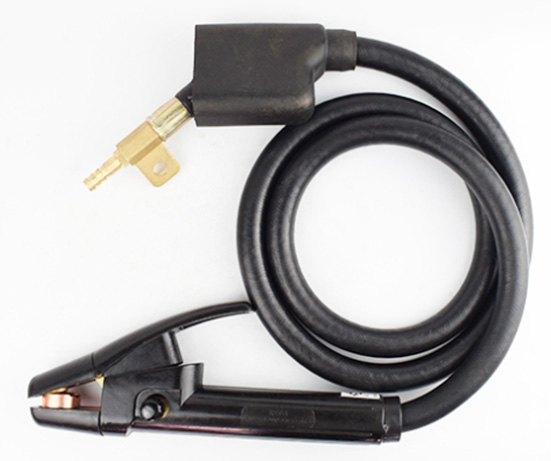How to optimize gouging angle, speed and carbon rod extension length to improve efficiency and reduce defects?
Optimizing the gouging angle, speed, and carbon rod extension length is the key to improving the efficiency of carbon arc gouging and reducing defects. The following are specific methods:
Gouging angle
• Angle selection: Generally, the gouging angle is more suitable between 45° - 60°. For thicker workpieces, the angle can be appropriately increased to increase the arc's ability to penetrate the workpiece and improve gouging efficiency. For example, when gouging a 20mm thick carbon steel workpiece, the gouging angle is selected to be 55° - 60°, which can enable the arc to act better on the workpiece and melt the metal quickly. For thinner workpieces, the angle can be appropriately reduced. For example, when gouging a 5mm thick sheet, the gouging angle is controlled at 45° - 50° to avoid burning through the sheet due to excessive angle and concentrated heat.
• Keep stable: During the gouging process, keep the gouging angle stable and avoid frequent changes in the angle. A stable angle can make the arc and the workpiece's action area and depth relatively consistent, ensure uniform groove width and depth, and reduce defects such as unevenness and inconsistency of groove surface.
Air gouging speed
• Adjust according to material and thickness: Workpieces of different materials and thicknesses require different air gouging speeds. For easy-to-gouge materials such as carbon steel, the air gouging speed can be relatively fast. For example, when gouging 10mm thick carbon steel, the air gouging speed can be controlled at 0.5-0.8m/min. For high-melting-point materials such as stainless steel and alloy steel, the air gouging speed should be appropriately reduced to ensure that the arc has enough time to melt the metal. For example, when gouging stainless steel of the same thickness, the air gouging speed can be adjusted to 0.3-0.6m/min. For thick workpieces, the air gouging speed should be slower to fully melt the metal and prevent defects such as slag inclusions; for thin workpieces, the speed can be appropriately increased to reduce heat input and prevent deformation.
• Uniform speed gouging: During the gouging process, the speed should be kept uniform as much as possible to avoid speed fluctuations. Uniform planing can make the arc heat the workpiece evenly, and the planing groove surface is smooth, with consistent width and depth. If the air planing speed is too fast, the arc will not have time to fully melt the metal, which will cause the bottom of the planing groove to be uneven and unmelted metal protrusions to appear; if the speed is too slow, the heat will be concentrated, causing the workpiece to overheat, the heat-affected zone to expand, and even the workpiece to deform or burn through.
Carbon rod extension length
• Reasonable selection of length: The carbon rod extension length is generally around 80-100mm. When the carbon rod extension length is too short, the compressed air cannot effectively blow the molten metal away from the planing groove, which is easy to cause slag inclusion and unclear planing groove. At the same time, the short carbon rod extension length will make the arc closer to the workpiece surface, and the heat will be too concentrated, which may cause the workpiece surface to overheat and deform. If the carbon rod extension length is too long, the rigidity of the carbon rod will be reduced, and it is easy to shake during the air planing process, resulting in unstable arc and affecting the quality of the planing groove. In addition, the excessively long carbon rod extension length will increase the resistance of the carbon rod, consume more electricity, and the carbon rod is easy to burn.
• Timely adjustment of length: During the gouging process, as the carbon rod is consumed, the carbon rod extension length should be adjusted in time to keep it within a reasonable range. Generally, after gouging for a period of time, such as 5-10 minutes, check the carbon rod extension length and push the carbon rod toward the electrode chuck in time to ensure the stability of the gouging effect.
By reasonably selecting and controlling the gouging angle, speed and carbon rod extension length, and making timely adjustments according to actual conditions, the efficiency of carbon arc gouging can be effectively improved, and defects such as slag inclusion, surface unevenness, and workpiece deformation can be reduced, thereby obtaining high-quality gouging grooves.

Contact: admin
Phone: +86-13665233012
E-mail: service@weldmaterial.com
Add: Huanghua Industrial park, Jiangdu City, Yangzhou , Jiangsu Provicne, China.